Filter by
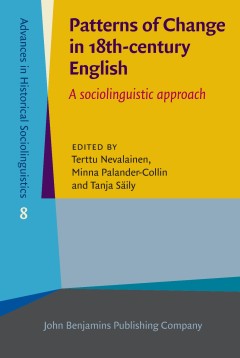
Patterns of change in 18th-century English : a sociolinguistic approach
Eighteenth-century English is often associated with normative grammar. But to what extent did prescriptivism impact ongoing processes of linguistic change? The authors of this volume examine a variety of linguistic changes in a corpus of personal correspondence, including the auxiliary do, verbal -sand the progressive aspect, and they conclude that direct normative influence on them must have b…
- Edition
- -
- ISBN/ISSN
- 9789027263834
- Collation
- xi. 311p. : ill.
- Series Title
- -
- Call Number
- 427.009033 PAT p
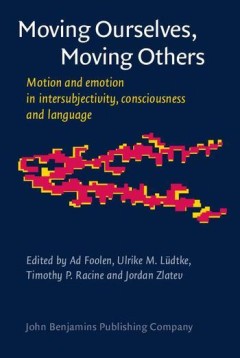
Moving ourselves, moving others : motion and emotion in intersubjectivity, co…
The close relationship between motion (bodily movement) and emotion (feelings) is not an etymological coincidence. While moving ourselves, we move others; in observing others move – we are moved ourselves. The fundamentally interpersonal nature of mind and language has recently received due attention, but the key role of (e)motion in this context has remained something of a blind spot. The pr…
- Edition
- -
- ISBN/ISSN
- 9789027241566
- Collation
- viii, 492p. : ill.
- Series Title
- -
- Call Number
- 401 MOV m
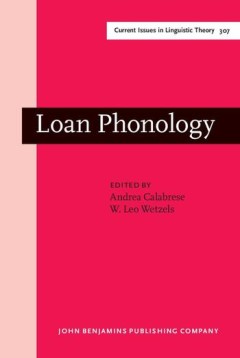
Loan phonology
For many different reasons, speakers borrow words from other languages to fill gaps in their own lexical inventory. The past ten years have been characterized by a great interest among phonologists in the issue of how the nativization of loanwords occurs. The general feeling is that loanword nativization provides a direct window for observing how acoustic cues are categorized in terms of the di…
- Edition
- -
- ISBN/ISSN
- 9789027288967
- Collation
- vii, 273p. : ill.
- Series Title
- -
- Call Number
- 414 LOA l
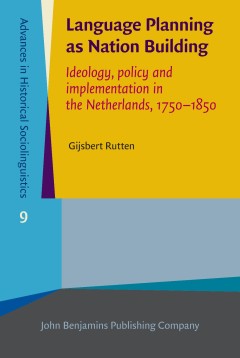
Language planning as nation building : ideology, policy and implementation in…
The decades around 1800 constitute the seminal period of European nationalism. The linguistic corollary of this was the rise of standard language ideology, from Finland to Spain, and from Iceland to the Habsburg Empire. Amidst these international events, the case of Dutch in the Netherlands offers a unique example. After the rise of the ideology from the 1750s onwards, the new discourse of one …
- Edition
- -
- ISBN/ISSN
- 9789027262769
- Collation
- x, 312p. : ill.
- Series Title
- -
- Call Number
- 306.449492 RUT l
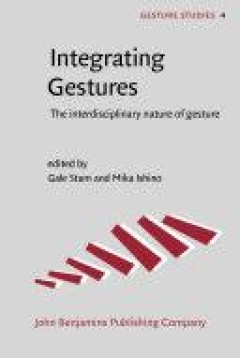
Integrating gestures : the interdisciplinary nature of gesture
Gestures convey information about culture, discourse, thought, intentionality, emotion, intersubjectivity, cognition, and first and second language acquisition. Additionally, they are used by non-human primates to communicate with their peers and with humans. Consequently, the modern field of gesture studies has attracted researchers from a number of different disciplines such as anthropology, …
- Edition
- -
- ISBN/ISSN
- 9789027287205
- Collation
- 372p. : ill.
- Series Title
- -
- Call Number
- 808.5 INT i
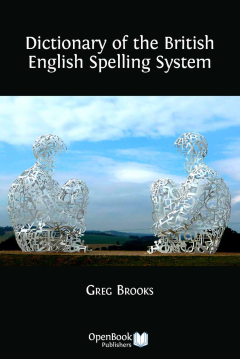
Dictionary of the British English Spelling System
This book will tell all you need to know about British English spelling. It's a referente work intended for anyone interested in the English language, especially those who teach it, whatever the age or mother tongue of their students. It will be particularly useful to those wishing to produce well-designed materials for teaching initial literacy via phonics, for teaching English as a foreign or…
- Edition
- -
- ISBN/ISSN
- 9782821876279
- Collation
- XXX, 492 p.
- Series Title
- -
- Call Number
- 421.52 BRO d
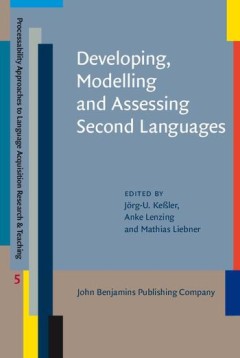
Developing, modelling and assessing second languages
This edited volume brings together the work of a number of researchers working in the framework of Processability Theory (PT), a psycholinguistic theory of second language acquisition (SLA) (Pienemann 1998; 2005). The aim of the volume is two-fold: It engages with current issues in both theory development and theory application and focuses on theoretical developments within the framework of PT …
- Edition
- -
- ISBN/ISSN
- 9789027267191
- Collation
- xviii, 244p. : ill.
- Series Title
- -
- Call Number
- 401.93 DEV d

Culinary linguistics : the chef's special
Language and food are universal to humankind. Language accomplishes more than a pure exchange of information, and food caters for more than mere subsistence. Both represent crucial sites for socialization, identity construction, and the everyday fabrication and perception of the world as a meaningful, orderly place. This volume contains an introduction to the study of food and an extensive over…
- Edition
- -
- ISBN/ISSN
- 9789027202932
- Collation
- xvi, 347p. : ill.
- Series Title
- -
- Call Number
- 420.147 CUL c
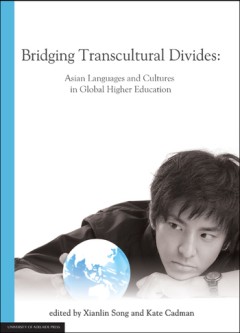
Bridging transcultural divides : Asian languages and cultures in global hight…
This volume presents the diverse approaches and achievements of scholars of Asian cultures and languages in today’s global academy. Recent vast increases in student numbers and ethnic diversity have created pressing challenges for a higher education which engages with contemporary concerns for Asian societies as well as for Asian students involved in Western education. This collection of scho…
- Edition
- -
- ISBN/ISSN
- 9781922064318
- Collation
- xvi, 286p. : ill.
- Series Title
- -
- Call Number
- 495 BRI b
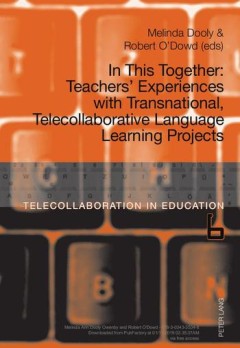
In this together : teachers' experiences with transnational, telecollaborativ…
This book provides a nexus between research and practice through teachers’ narratives of their experiences with telecollaboration. The book begins with a chapter outlining the pedagogical and theoretical underpinnings of telecollaboration (also known as Virtual Exchange), followed by eight chapters that explain telecollaborative project design, materials and activities as well as frank discus…
- Edition
- -
- ISBN/ISSN
- 9783034335010
- Collation
- 230p. : ill.
- Series Title
- -
- Call Number
- 418.00785678 IN i
 Computer Science, Information & General Works
Computer Science, Information & General Works  Philosophy & Psychology
Philosophy & Psychology  Religion
Religion  Social Sciences
Social Sciences  Language
Language  Pure Science
Pure Science  Applied Sciences
Applied Sciences  Art & Recreation
Art & Recreation  Literature
Literature  History & Geography
History & Geography